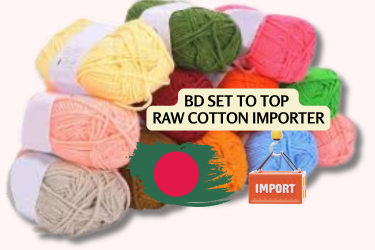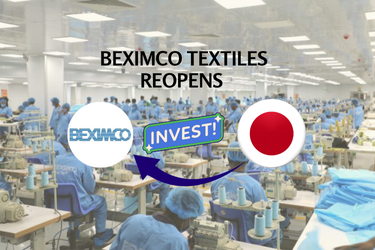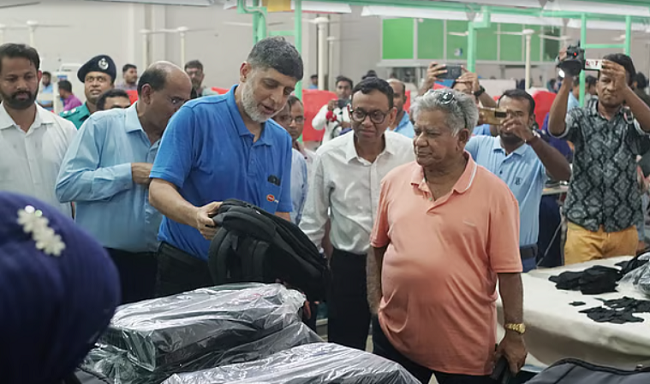Rising inflation and policy shifts drive up textile costs and retail prices
Mohammad Swaif Ullah
Published At: December 26, 2024The textile industry faces the challenges of high inflation as the price of raw materials, energy, and lingering issues of supply chain management by the end of 2024. It grounded the textile industry in the past because the most common inflationary factors affect different sectors with consideration given to the fact this industry relies on resources power and energy-intensive processes. Let’s point out how inflation is redesigning the global textile market in a way that puts immense pressure on manufacturers as well as brands to innovate.
Rising costs of raw materials and impacts on manufacturing
Even cotton prices fluctuation in 2023, having a high price of $1.10 per pound but in early 2024 it was at $0.92 per pound which is much higher than $0.65 per pound of pre-2021. Other synthetic fibers such as polyester for similar reasons also experienced an upsurge in price; market rates rose from 10%-15% in 2023 due to volatility in oil prices which is an essential raw material for synthetic fibers. The high price of raw materials affects all the manufacturers within the industry’s value chain eroding profit margins.
Energy and inflationary trend
Labor-intensive processes like dyeing, spinning, and finishing increase the industry's vulnerability to the high cost of energy. In the international market oil price and natural gas prices rose slightly than 15% between 2022 to 2024. European natural gas prices dropped by 15% from the 2022 peak at $18 per MMBtu, cited in March 2024 as around $15 per MMBtu.
The industry is vulnerable to geopolitical factors that further increase problems of energy prices; especially for countries such as Bangladesh India and Pakistan overly dependent on imported energy.
Consumer behavior and new trends in buying habits
Overall expenditure on apparel has come down by 10-15% in the Western markets, particularly in the category of fast fashion. Customers are getting more concerned about the quality of products and are now on the lookout for eco-friendly products due to product durability when budgets are strained. Therefore, renowned global brands are focusing on quality aspects as well as green practices.
According to the Global Textile Business Outlook 2024, the global retail price index has increased by 6 % but the maximum percentage influenced the buying behavior in specific regions like Asia, South Asia, and Africa. Unofficially it was established that almost 40% of the buyers prefer those brands that are associated with environmentally conscious campaigns.
The hypothesis of localizing supply chains for developing country
For instance, in Bangladesh they have first sourced local raw materials which has increased by 5% this has lessened the problem of importing raw materials which causes some inflation. The responses mentioned in the backdrop by the Bangladesh Garment Manufacturers and Exporters Association (BGMEA) described it as a modular plan of decentralized supply chain war against inflationary threats that emerged from the world economy. Similarly, India’s Textile Production Subsidy Scheme provides up to 15% off on textiles and bows 40% of regional textile mills helping to keep a check on production expenses.
This has however been driven by industry trends moving towards regional sourcing. Any local production increment in countries like Bangladesh, Vietnam, and Pakistan decreases reliance on supply chain disruptions and raw material costs to make ways for stable, inflation-indexed production strategies.
A route to cost efficiency by using technological advancement
In turning the tide against inflation, the textile industry in particular sees the utility of adopting both automation and safe technologies. The McKinsey 2024 State of Fashion suggests that full automation of work floors can down silver labor expenses by 6% and total manufacturing costs by 20%. Several organizations are using AI for demand forecasting and inventory management, and this has helped reduce expenses by 10 % through improved supply chain management.
H&M, the world’s biggest fast fashion company, recognized affecting price sensitivity as a hurdle. One participant said, “Increase in price of raw material and transportation cost is also a challenge.” A few of these costs may end up being passed on to the consumer even as we work to roll out effective supply chain management strategies capable of reducing these effects. Add another consideration to the list the commitment to sustainability that requires additional investment that we are considering carefully now.”
Trade policies and economic pressures
Trade policies such as fiscal adjustment are also putting pressure on the cost in the industry. Rising International interest rates have forced 48% of the textile firms to delay their expansion strategies because the cost of finance has gone up an average of 8%. Moreover, with tariffs on Chinese textiles standing at 25%, US buyers have searched for other markets and turned to southeast Asia and African nations if at a slightly higher initial expense.
Consequently, manufacturers have started developing regional capacities that can overcome the barriers created by trade policies and are covering up the costs of tariffs through incentives from other regions. For instance, emerging markets in Southeast Asia come with cheaper manufacturing costs borne by governments as they eliminate some cost pressures that firms experience due to inflation as they look for alternatives to imports from China.
Sustainability as a key strategy amid inflation
Moreover, sustainability certification is becoming even more vital because customers care about responsible production today. Brands holding sustainability certificates have increased their sales by up to 15% over the past year, proving that sustainability is a key factor in an inflationary market.
Nike identified inflation and policy changes as the factors that had an impact on operations in the sportswear sector. “Competitive pressures on a global scale include an increase in costs throughout the world in material and transportation. We engage in supply chain advancements for addressing these changes but we are keen on ensuring prices are affordable to our customers, Nike’s representative stated. “Very much focused on sustainability, especially here where some of the costs are higher than in a traditional supermarket-format store which we are containing.”
High inflation therefore poses a very profound threat to the operation of this textile sector requiring radical change for it to be able to sustain profitability. Strategic improvisations promoting clean operational production mechanisms are essential to the goal. This year industry response to inflation will define future stability; making way for textiles that are balanced and sustainable in the coming years.





